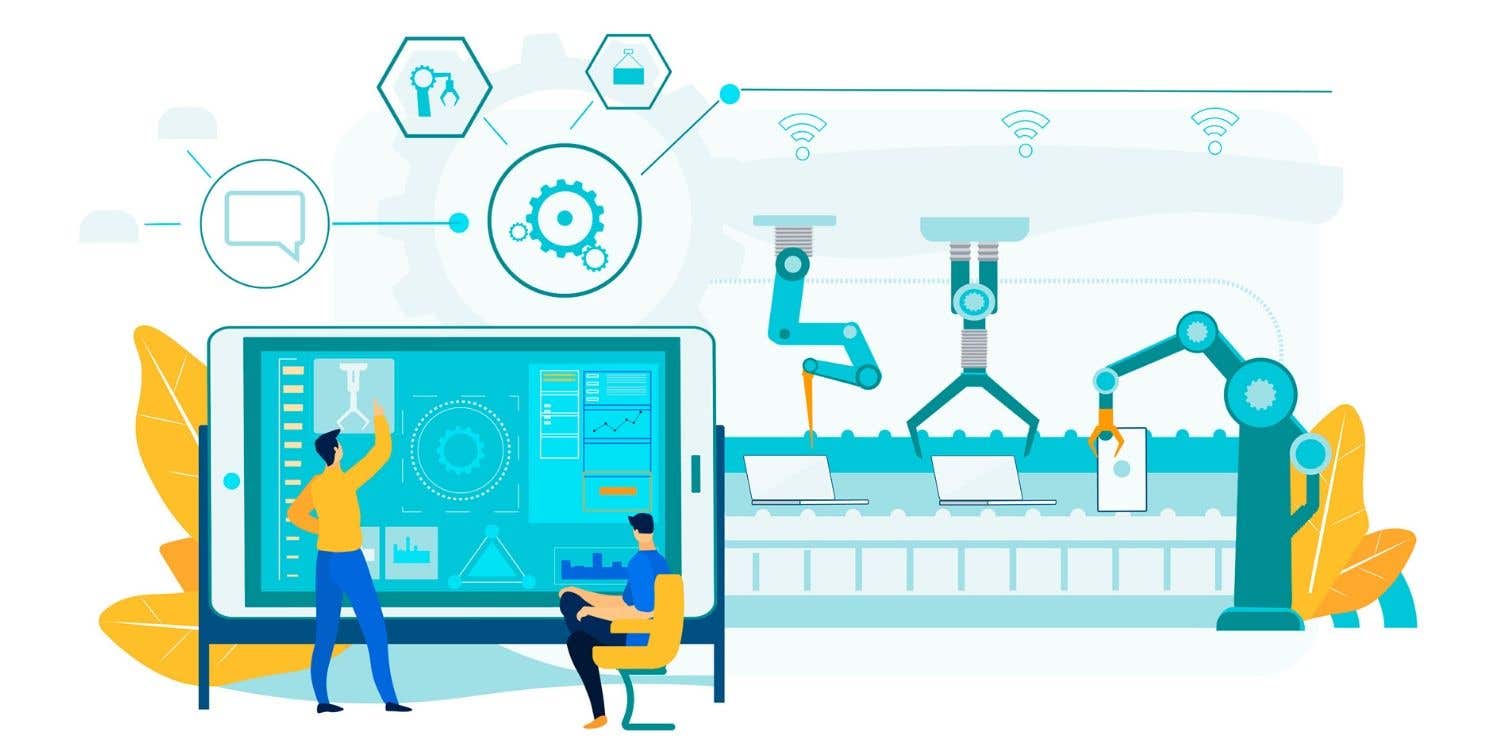Chat with Ava - Your AI Business Consultant
Hi I'm Ava, your AI guide to supercharging your business!
Whether you're already running a business or dreaming of starting one, I'm here to help turn your vision into reality using AI powered freelancers. Share your business goals, and together, we'll create a project that our talented freelancers can bid on. Let's make your vision a reality!
I have a business
I'm starting a business
Something went wrong while sending the conversation to your email. Please try again later.
You can only save your conversation once per hour. Please try again later.
Your conversation is too short. Keep chatting with Ava to enable saving.
How to Find the Perfect CAM Designer Near You that Fits Your Needs
Looking for computer-aided manufacturing (CAM) designers in your area?
Apr 13, 2023 • 18 minute read
Updated on Apr 26, 2023 by Hector P.

Digital Marketer | 10+ years experience
Copy to clipboard failed, please try again after adjusting your permissions.
Copied to clipboard.

Hey there! So, you're on the lookout for CAM Designers near you? That's fantastic! We know how important it is for you to find the perfect match for your project. Skilled CAM Designers can help turn your ideas into tangible, manufacturable designs swiftly and accurately. And the good news is that there are numerous talented professionals available to help you with your CAD/CAM projects, both locally and remotely.
But before we dive into finding the best CAM Designer for you, let's take a quick moment to refresh our understanding of what a CAM Designer does. A CAM Engineer , or Computer-Aided Manufacturing Designer, is responsible for converting CAD (Computer-Aided Design) models and other data into detailed instructions that can be used by CNC (Computer Numerical Control) machines to manufacture parts and products. This involves selecting the most efficient and cost-effective methods and tools for producing your design.
Now, let's talk about finding local CAM Designers. Firstly, it's great that you are considering professionals in your area, as local talent has its perks – think face-to-face communication, similar time zones, and possibly even shared industry connections. When searching for local CAM Designers, consider leveraging networking events or local online forums related to manufacturing or engineering industries. Local universities or trade schools with CAM/CAD courses might be a goldmine of talent; reach out to professors or career centers for recommendations of recent graduates or accomplished students.
However, don't forget about the vast pool of remote talent out there! Skilled CAM Designers from around the globe can bring new perspectives and expertise to your project that may be difficult to find nearby. When searching for remote CAM Designers, online platforms specializing in freelance design professionals can be your gateway to a world of talent. Job boards, social media groups, and industry forums dedicated to CAD/CAM professionals can also be great places to search for potential candidates.
No matter whether you decide to work with local or remote CAM Designers, it's crucial to review a candidate's portfolio and previous work experience. Look for projects similar to yours in size and complexity, and make sure their design aesthetic aligns with your vision. Don't hesitate to ask for references from previous clients or colleagues – having confidence in your CAM Designer's abilities will make the entire process smoother and more enjoyable for everyone involved.
In summary, finding the right CAM Designer near you (or across the globe) doesn't have to be a daunting task. With a mix of targeted networking, engaging with educational institutions, and exploring online platforms brimming with talent, you'll soon be well on your way to turning your design vision into a reality. Best of luck!
Demystifying Computer-Aided Manufacturing: Definition of CAM
If you're a newcomer to the manufacturing industry or an entrepreneur in search of innovative production techniques, Computer-Aided Manufacturing, or CAM as it's commonly called, is a technology you'll want to learn more about. By breaking down the definition of CAM and understanding the world of opportunity it presents in today's rapidly transforming manufacturing landscape, you’ll be better equipped to make informed decisions about your own production processes.
At the most basic level, Computer-Aided Manufacturing is the use of software and computer-controlled machinery to automate and streamline manufacturing processes. In other words, it simplifies complex production routines while increasing efficiency by leveraging computer technology to exert command over machines that perform the actual work. This translates into cost savings, reduced human error, and greater precision in final products.
How does CAM technology work? Some applications involve everything from product design and prototyping, to machining parts out of raw materials. When combined with other technologies such as Computer-Aided Design (CAD), a designer or engineer can create detailed digital blueprints for a product, with measurements accurate down to the micron. The digital blueprint can then be fed into CAM software, which translates it into code that directs the exact movements of machinery — like routers or lathes — ensuring precision manufacturing. In many cases, this greatly reduces the need for manual input and intervention by skilled craftsmen.
The advent of CAM technology has revolutionized numerous industries including aerospace, automotive manufacturing, construction, and even clothing production. It has enabled manufacturers to take on mass production without diminishing quality by allowing companies to produce identical parts with high accuracy and speed.
As demand for efficiency grows in today's fast-paced world, so too does the importance of harnessing advanced tools and technologies like CAM. Think about how this powerful potentiator could potentially redefine your own manufacturing processes, and stay tuned for more insights in our upcoming segments focused on CAM Designers and how they drive this exciting field forward!
Who are CAM Designers?
So, you’ve just learned that CAM Designer is a key player in the manufacturing process. But who exactly are these dream weavers who bring our designs to life? CAM Designers, or Computer-Aided Manufacturing Designers, are highly skilled professionals with expertise in using advanced software to create manufacturing processes for a wide range of industries. From automotive to aerospace and everything in between, these talented individuals transform your designs into tangible products. They are the wizards behind the curtain aiding and enhancing the production process!
Among their varied skills and talents, CAM Designers work closely with engineers and product designers to develop manufacturing plans, ensure cost-efficiency, and evaluate constructibility of designs. Their toolbox includes a deep understanding of materials, manufacturing methods, and CAD (Computer-Aided Design) systems, which they use to create detailed 2D or 3D models for production purposes.
The educational background of CAM Designers typically includes a degree in mechanical engineering or a related field, but that's not all! Their expertise often calls for specialized training in CAM software applications like SolidWorks, Mastercam, Siemens NX, CATIA, and many more. With their advanced skill sets and industry-specific knowledge, they can expertly navigate even the most complex production challenges – ensuring your projects run smoothly from start to finish.
When it comes to finding top-tier local or remote talent in this field, businesses have several options. Employing both freelance CAM Designers as well as those affiliated with design agencies is viable. Weighing the pros and cons of each option is crucial as it all depends on factors such as budget constraints, project scope, and other specific needs unique to your business. Just remember: whether you’re seeking a freelancer from across the globe or partnering with a local design agency, top-notch CAM talent is within your reach!
Now that you've got the inside scoop on who CAM Designers are and what they bring to the table, it's time to continue your journey into the exciting world of computer-aided manufacturing. Onward to exploring how to engage with CAM Engineers and make the most of your collaboration!
Identifying a Good CAM Engineer: What to Look For
If you're looking for a fantastic CAM engineer—the best of the best—to help you in your next manufacturing or production project, then you're in the right place! We've got some amazing tips and tricks to help you identify and engage a talented CAM engineer. Let's jump right in!
First things first, what is a CAM engineer? Computer-Aided Manufacturing (CAM) engineers are specialized professionals who work closely with Computer-Aided Design (CAD) files to create a systematic and efficient production process. Their role is to translate CAD designs into machine-readable directions using CAM software so that CNC machines can manufacture products as smoothly as possible.
After understanding their vital role, here are some key factors you should consider when looking for the right CAM engineer:
In conclusion, an exceptional CAM engineer is someone who often combines strong technical knowledge and experience with excellent problem-solving skills and great communication abilities. Look for these traits as you seek out the perfect CAM engineer for your project, whether by reaching out to your network, hiring a freelancer or engaging with an agency. Happy hunting!
Understanding the Cost of Hiring a CAM Engineer
So, you've identified your manufacturing needs and realized that investing in Computer-Aided Manufacturing (CAM) is the way forward. Naturally, the next step is to find the right CAM engineer who can turn your ideas into reality. One major factor that must be considered when hiring a CAM engineer is the cost involved. In this article, we'll shine the spotlight on what goes into determining the cost of hiring a CAM engineer and how you can get the most out of your investment.
First and foremost, it's important to understand that hiring a CAM engineer is an investment in both time and money. You will typically pay more for an experienced CAM engineer compared to a novice, but keep in mind that your project's success depends on their expertise level! Thus, choosing the right professional from the get-go will save you time and money in the long run.
When considering the cost of hiring a CAM engineer, several factors must be taken into account. Factors such as experience, location, timeline, project complexity, and level of customization can all impact the overall budget for your project. Some engineers might also charge by hourly rates, while others could offer package deals or fixed rates for specific tasks.
To help you gauge how much you should expect to spend on a CAM engineer's services, begin by researching industry standards and read up on different pricing methods. This way, you'll have an idea of the average range for your specific needs. Don't be afraid to reach out to multiple professionals and request quotes – this will give you a clearer picture of what's reasonable for your project.
When engaging a CAM engineer locally or remotely, weigh the pros and cons of both options before making your decision. One might offer cost savings while sacrificing collaboration, while another might provide closer communication at a higher price. Evaluate these factors, and consider which aspects are most important to you and your project's success.
Ultimately, the cost of hiring a CAM engineer will return value through improved manufacturing processes, efficient production methods, and potentially better product quality. Remember that investing in a skilled CAM engineer is an investment in your project's success. Perform thorough research, ask questions, obtain quotes, and look for a top-notch CAM engineer who can help bring your ideas to life without breaking the bank.
Deliverables from a CAM Engineer
When you're ready to bring on a skilled CAM Engineer to transform your concepts into reality, it's important to have clear expectations of what deliverables you should receive from them. This way, you'll not only ensure a smoother collaboration but also get the most value out of your investment. So, let's dive into the key deliverables you can expect from a top-notch CAM Engineer!
Firstly, a well-documented and duly formatted CAD model is an essential deliverable from any CAM engineer. This model should incorporate all the necessary geometries and dimensions crucial in the product manufacturing process. In addition, proper layering and organizing of components will make it easier for everyone involved to navigate and understand the model.
Next, CAM engineers provide detailed manufacturing drawings that serve as the blueprints for your product's fabrication. These drawings should clearly indicate dimensions, material specifications, tolerances, surface finishes, and any other information pertinent to the manufacturing process. Having such comprehensive drawings will help minimize errors and miscommunications during production.
Apart from CAD models and manufacturing drawings, many CAM Engineers also offer simulation services as part of their deliverables package. Simulations provide invaluable insights into how effective the designed components are when put to use under realistic conditions. This helps identify potential issues before they become costly problems—allowing for optimized modifications that can save time and resources down the line.
Depending on your project scope, another beneficial deliverable that CAM engineers might provide is assistance in material selection or sourcing suppliers. This includes assessing material suitability in terms of product functionality requirements, cost-effectiveness, and availability. With their experience and knowledge in materials science and engineering practices, they can recommend informed choices tailored specifically for your application.
Lastly, another fundamental aspect to consider when engaging a CAM engineer is the project timeline. Ensure that both parties establish a clear, mutually agreed-upon project schedule to avoid misunderstandings that could impact the progress of the collaboration. Remember, strong communication is vital for efficient and effective teamwork!
In summary, high-quality CAD models, manufacturing drawings, simulations, material recommendations, and proper project management are key deliverables to expect from a skilled CAM engineer. By understanding and establishing these expectations upfront, you'll be well on your way to seeing your brilliant ideas turn into tangible, successful products!
Thriving While Working Remotely with a CAM Engineer
Technological advancements have made it possible for professionals like CAM (Computer-Aided Manufacturing) Engineers to work efficiently from remote locations. This incredible opportunity has opened the doors for businesses to expand their talent pool and work with experts from across the globe. With this newfound flexibility, let's explore how to best work and thrive in a remote environment with a CAM Engineer.
Communication is key when engaging with a CAM Engineer, especially when working remotely. Make use of available technology to establish regular check-ins and progress updates. Schedule video conferences or phone calls to review project progress, exchange ideas, provide feedback or simply touch base to maintain a strong working relationship. Utilizing instant messaging tools and collaboration software also ensures that everyone stays on the same page.
Establishing clear expectations from the onset is crucial when working remotely with a CAM Engineer. Define project goals, deliverables, deadlines, and communication methods before diving into the project. Make sure your CAM Engineer understands your manufacturing requirements and constraints thoroughly, so they can make informed decisions while developing the design plan.
In addition to excellent communication and setting expectations, providing ample resources and access to necessary design files or software will enable your remote CAM Engineer to excel at their job. It's important for them to have all relevant information readily available so that they can easily navigate through their work process without delay.
Building trust with your remote CAM Engineer is an essential aspect of ensuring a successful outcome for your manufacturing project. Foster an environment that encourages open dialogue, where concerns and ideas can be raised without fear of judgment. Regular evaluation of performance is also essential – if there are areas requiring improvement or adjustment in your remote-working dynamics, take note of them early on and work together to create effective solutions.
In summary, working remotely with a CAM Engineer can be a successful and rewarding experience. With the convenience of technology, open communication, and providing necessary resources, you can establish a strong working relationship with your CAM Engineer, despite the physical distance. Happy manufacturing!
Pros and Cons of Local vs. Remote CAM Designers
Considering the fast-paced and constantly evolving world of engineering design, it's important to stay ahead of the competition by making the right choices for your business. One of the critical decisions you'll have to make is whether to engage local or remote CAM Designers. This article offers an objective comparison between local and remote CAM Designers, highlighting the pros and cons of each option to help you make an informed decision.
In conclusion, both local and remote CAM Designers have their advantages and disadvantages. It's essential to assess your project requirements, budget, communication preferences, and available talent before making a decision. With careful consideration and the right partnership, working with CAM Engineers can lead to success in achieving your design objectives.
Pros and Cons of Freelance vs. Agency CAM Designers
In the world of Computer-Aided Manufacturing (CAM), collaboration with a skilled CAM Designer is essential to achieving optimal results. As companies and manufacturers seek the expertise of these professionals, they are often faced with the choice of hiring a freelancer or engaging with an agency. So, how can you determine which path will be the best-fit solution for your specific needs? Let's explore the pros and cons of freelance versus agency CAM Designers!
Freelance CAM Designers are self-employed specialists who offer their services to various clients on a project-by-project basis. Often, they work remotely, which can reduce costs and provide flexibility in terms of location.
Some advantages of working with a freelance CAM Designer include:
However, freelancers also come with some potential drawbacks:
On the other hand, agency CAM Designers work for established companies that specialize in providing CAM-related services. By choosing a reputable agency for your project needs, you gain access to their team of design experts.
The benefits of engaging with an agency include:
However, there are also some downsides to consider:
In conclusion, each option has its own set of advantages and disadvantages, so it's essential to evaluate your unique needs and priorities. Keep in mind factors such as project scope, desired level of expertise, budget, and required resources when making your decision. Ultimately, whether you choose to partner with a skilled freelance CAM Designer or an experienced agency comes down to what best aligns with your project goals.
Recap of Key Points: What You Need to Know About CAM Designers
Isn't it amazing how technology continues to innovate and enhance various industries? Among these exciting developments lie advancements in the field of manufacturing, where Computer-Aided Manufacturing (CAM) plays a significant role. To make this possible, we have talented CAM Designers who are crucial for businesses pursuing increased efficiency and improved production processes. This article aims to recap the key points in understanding who they are and how you can engage with them effectively for your projects.
Firstly, let's revisit the definition of CAM. It involves utilizing computer software to control and automate various manufacturing processes such as milling, machining, and 3D printing. The individuals responsible for creating effective CAM systems are known as CAM Designers, whose expertise includes creating accurate and efficient manufacturing plans that can increase overall productivity.
When it comes to engaging a CAM Engineer, there are important factors to keep in mind. You'll want to identify a good CAM Engineer by checking their educational background, certifications, work experience, and sample projects or portfolios that demonstrate their capabilities. It's equally essential to factor in the cost of hiring a CAM Engineer when planning your budget. Make sure you clearly understand the deliverables you'll be receiving from your hired professional, ensuring they align with your project goals.
In today's increasingly interconnected world, you have the flexibility of working remotely with a CAM Engineer should it suit both parties better. However, also take note of the pros and cons of remote versus local talent before making any final decision. Likewise, weigh your options between freelance CAM Designers versus agency-hired professionals for the best fit in your current situation.
In conclusion, don't forget that exploring these key points is meant to help you make well-informed decisions when seeking a top-notch CAM Designer for your next project. By doing so, you'll be more prepared to hire and work effectively with a CAM Engineer who can bring value to your business and support the ever-evolving world of technology and manufacturing.
Final Thoughts and Recommendations on Engaging a CAM Engineer
In today's rapidly evolving world of technology, the competition is high when it comes to finding the perfect CAM Engineer who can work wonders for your business requirements. It is essential to understand the factors that contribute to choosing the right candidate for a smooth, efficient, and successful project. In this article, we will provide final thoughts and recommendations on how to engage a talented CAM Engineer for your business.
First, it is crucial to identify your CAM project's requirements in detail. Understanding the complexity, required expertise, and expected time frame will make the selection process for a CAM Engineer more manageable. Be specific about the software tools, such as Autodesk Fusion 360 or SolidWorks, that you prefer or require. This information can help attract suitable candidates and save your valuable time when shortlisting potential engineers.
Next, consider whether working with local or remote CAM Designers is appropriate for your needs. If regular face-to-face interaction and real-time collaboration are vital for your project, local talent may be preferable. However, remote engineers can offer a broader pool of expertise and availability across different time zones – which can be advantageous depending on the scale of your project.
Evaluating the pros and cons of working with either freelance or agency-based CAM Designers is another essential aspect to consider. Freelancers may provide increased flexibility and more competitive rates than agencies but may also lack resources like software licenses or access to an established support team. Agencies can offer more comprehensive solutions but may come at a higher total cost due to overheads such as equipment and workspace expenses.
Last but not least, thorough communication is critical when engaging a CAM Engineer. Clear expectations regarding deliverables will ensure meeting deadlines and achieving desired outcomes without compromising quality. Make sure both parties understand their responsibilities by providing specific goals, timelines, milestones, and budgets to establish a solid working relationship.
In conclusion, engaging the right CAM Engineer requires careful consideration of various factors, including skills, locality, pricing, and communication. By taking the time to evaluate your needs and conducting thorough research on potential candidates, you can significantly increase your chances of success in your project. Remember, finding the perfect fit is crucial for fostering a lasting partnership and attaining the best possible results for your business.
Hire an Expert CAM Engineer on Freelancer.com
After gaining a thorough understanding of CAM, CAM Designers, and their significance in various industries, one might wonder where to find a qualified expert. The answer is simple - look no further than Freelancer.com ! This platform offers a fantastic venue for both clients in need of professional assistance and skilled CAM Engineers looking for exciting projects. A great advantage to hiring through Freelancer is that it enables you to select the most suitable engineer from a pool of proficient professionals worldwide.
When it comes to hiring a CAM Engineer for your project, Freelancer.com provides various tools that can facilitate an efficient hiring process. To get started, clients can sign up on the platform and post a detailed description outlining their requirements and expectations for the project. This includes factors such as estimated budget, timeline, and any specific qualifications or skillsets that are essential for the role.
Withthat project description in place, potential candidates can review it and submit their proposals (bids) based on their level of expertise and capabilities. Clients can review these proposals, evaluate the candidates' profiles, and communicate with them directly through Freelancer's messaging system. It is vital to take the time to assess each candidate’s qualifications, work samples (portfolio), client reviews, and success rates to ensure you make the right choice.
Once you have decided on your preferred CAM Engineer, you can officially hire them through Freelancer.com's secure payment system that guarantees secure transactions during project collaborations. This Milestone Payment System ensures both parties are protected throughout the contract period by holding funds until clients approve completed tasks or milestones. Should any disputes arise between clients and freelancers during this time, Freelancer.com's reputable support team is readily available to provide assistance.
In conclusion, Freelancer.com is undoubtedly an excellent resource for hiring a professional CAM Engineer for your project needs. Its user-friendly platform and reliable support systems ensure a seamless hiring experience, enabling clients to focus on achieving their goals and visions. Dive into the world of talented and experienced CAM Engineers today!
Tell us what you need done
Enter your project name
Related Stories
Talk to one of our Technical Co-Pilots to help with your project
Recommended Articles Just for You

What is AutoCAD and why is it necessary for design.
8 min read

Learn all about how to get a 3D design printed.
6 min read

You've designed an amazing product, and now it's time to get it produced. We'll show you what to look for in a manufacturer to bring your idea to life
6 min read

3D printing technology means you don't need a factory to build a physical product. We'll show you how to take your idea from paper to prototype
6 min read
Thanks! We’ve emailed you a link to claim your free credit.
Something went wrong while sending your email. Please try again.
Loading preview
Permission granted for Geolocation.
Your login session has expired and you have been logged out. Please log in again.




